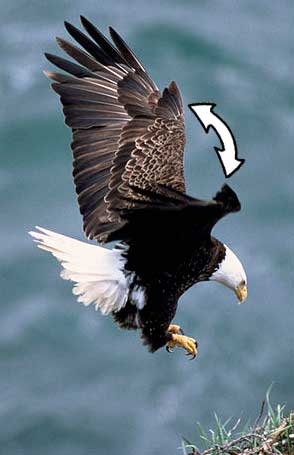

So far, a simple mathematical model, describing tubercles as delta wings, is presented and verified by experimental data. In addition, the detailed analysis of mechanisms underlying the improvement of performances suggests that a triangular shape of the leading edge combines the advantages of easy manufacturing and improvements of pre-stall behaviour. Measurements indicate performance improvements for all trailing edge tubercle geometries here tested. To this end, different tubercle geometries are tested, by measuring overall forces acting on the wings and by deriving detailed velocity fields using particle image velocimetry. Specifically, the tubercles observed in humpback whales are considered with a special focus on easy manufacturing and performance improvements, trying to overcome the observed lift coefficient reduction before stall in comparison with a standard wing.

The present study aims investigating experimentally wing/blade geometries in which the leading edge is modified by the presence of artificial bumps, following examples in nature (“biomimetics”). Finally, concluding remarks are drawn based on recent advances in understanding the flow features and predictions with CFD methods.


In addition, the variation of hydrody-namic coefficients for different cylindrical shapes are compared. Alongside the Reynolds number and geometrical shape, the impacts of rotational rate, aspect ratio, angle of attack, and gap ratio between the cylinder and the bottom wall on the hydrodynamic coefficients, Strouhal number, recirculation length and suppression of vortex shedding in the cylinder wake are investigated. This paper reviews the wake formations for different cylindrical bluff bodies cross-sections such as circular, elliptical, helically twisted elliptical, symmetric wavy, asymmetric wavy, and harbor seal vibrissae cylinders. Reynolds number and geometry are in turn two prominent parameters that govern the formation and subsequent behaviour of this wake. The wake that forms at the leeside of the bluff body is of particular interest. *Color vision- highly developed and can reach into the near-ultraviolet range of the spectrum.The application of unsteady incompressible flow phenomenon over the bluff bodies has received the attention of many researchers due to the rich and complex physics underpinning these flows, and thus requiring special attention in their modelling and numerical simulations. *Navigation- birds can navigate by using patterns of Earth's magnetism, celestial clues, and perhaps polarized light. *Syrinx- of birds is a unique sound-producing structure. *Brains- large, well developed, exhibit functional lateralization, w/ left hemispheric dominance associated w/ learning & innovation in vocal repertoires. *Most birds form monogamous pair bonds, some for life. *Eggs- birds produce large, richly provisioned external eggs. *Circulatory and respiratory system- in birds include a powerful four-chambered heart & efficient lungs, which deliver fuel & remove both waste and heat produced by metabolic activities. *Red fibers- of avian flight muscles have an extraordinary capacity for sustained work and can produce heat by shivering. *Feet- have features that are long tendons that pass around the backside of the ankle joints. *Aboreal (tree dwelling species)- have feet that tightly grip branches. *Stable balance- bird's center of gravity is positioned directly over and between its feet. *Bird bones- typically lightweight structures, being spongy, strutted, and hollow. *Avian gizzard- large, strong, muscular structure used primarily for grinding and digesting tough food. *Bills- toothless and covered with a horny sheath.


 0 kommentar(er)
0 kommentar(er)
